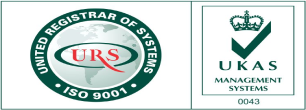


Tool Optimization for gear wheel forging The initial technology consisted of two operations and a one-piece top die was used for the second operation. In this example the top die suffered from short die life and the die failed after only 400 forged parts. In the simulation results below you can see the high strain and effective strain that cause the short die life. QForm also allows the user to add their own user defined functions (UDF) to investigate problems such as this. In this example the danger zone in the tool has been confirming of by means of Cockcroft & Latham criteria. The extensive experience of our specialists in the metal forming industry has helped to solve this problem by using an assembled tool rather than a solid tool and simulation in QForm software has confirmed that this significantly improves the tool life. The Cockcroft & Latham simulation results show that the modified design of the tools increased the tool life by three times. Gear wheel forging in two operations is shown in the video. An assembled tool was used for final forming. Effective stress field is shown for the first operation, plastic strain – for the second operation. The tools that allow maximization of die life and accurate calculation of loads required for forming. Simulation can show tool information including distortion due to forming load, radial and axial displacement, load, effective stress and strain, mean stress, radial stress and strain, axial stress and strain, hoop stress and strain, shearing stress and strain, volumetric strain and die wear factor. They can experiment with the following:Tool Optimisation
DDSPLM Private Limited is a leading engineering solution vendor with more than 25 years experience. DDSPLM is a Siemens Expert Partner and a trusted advisor for more than 700 customers from small to large across the different indutry verticals.

